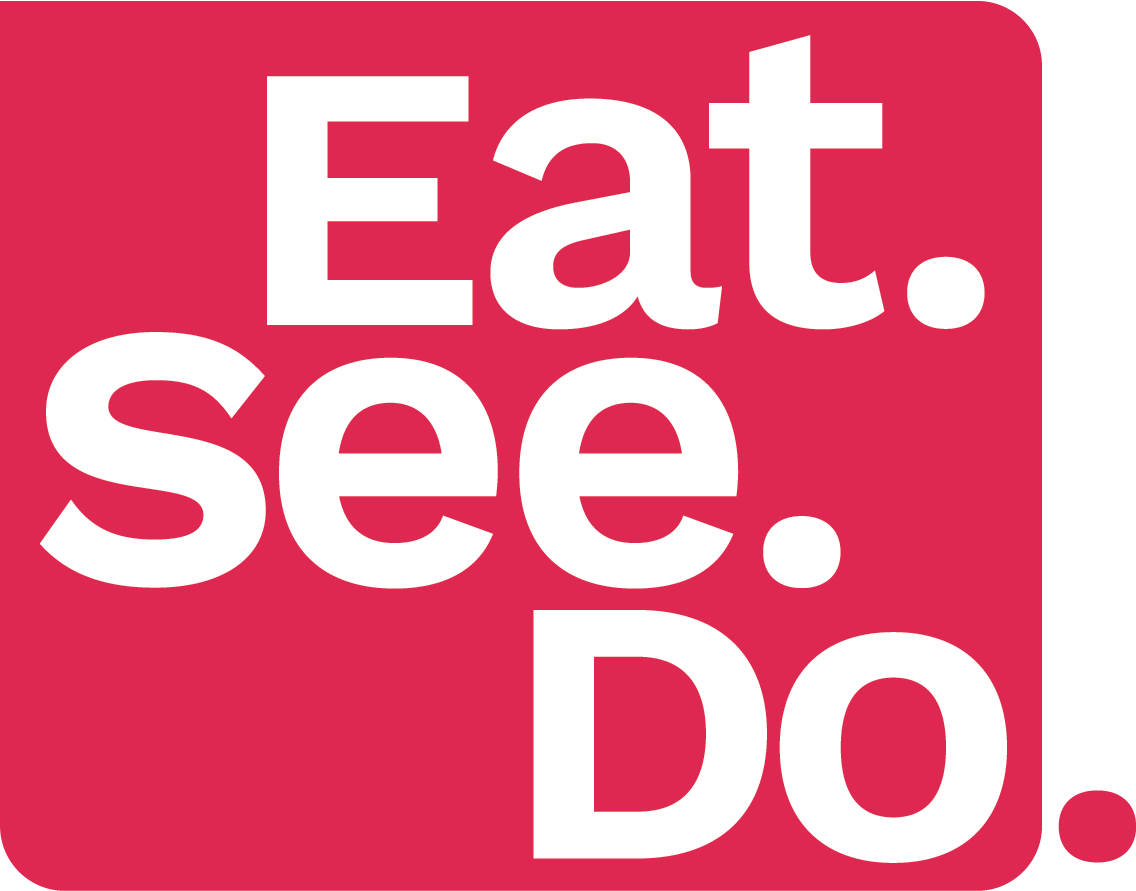Vanessa Harmon found something unexpected in the pandemic-induced office exodus: solace from the confining walls of her law firm. She also found the gumption to fulfill a decades-long dream of opening a cheese shop.
Last September, she opened the doors to The Vintage LBC in Bixby Knolls, a cheese and wine shop that offers custom charcuterie boards—the elaborate grazing platters that became a social media sensation during the long months of lockdown. Luckily for Harmon, they survived the era and are more popular than ever.
“It’s such a fun, creative process. I mean, you’re really kind of designing a really intriguing visual,” Harmon told the Post.
Opening The Vintage LBC meant returning to her roots in fine dining and fulfilling a decades-long dream of becoming a cheesemonger, basically a cheese sommelier. Harmon, who still practices law full time from home, works at the shop any spare moment she can find—afternoons, evenings and weekends. She also delivers fresh bread each morning.
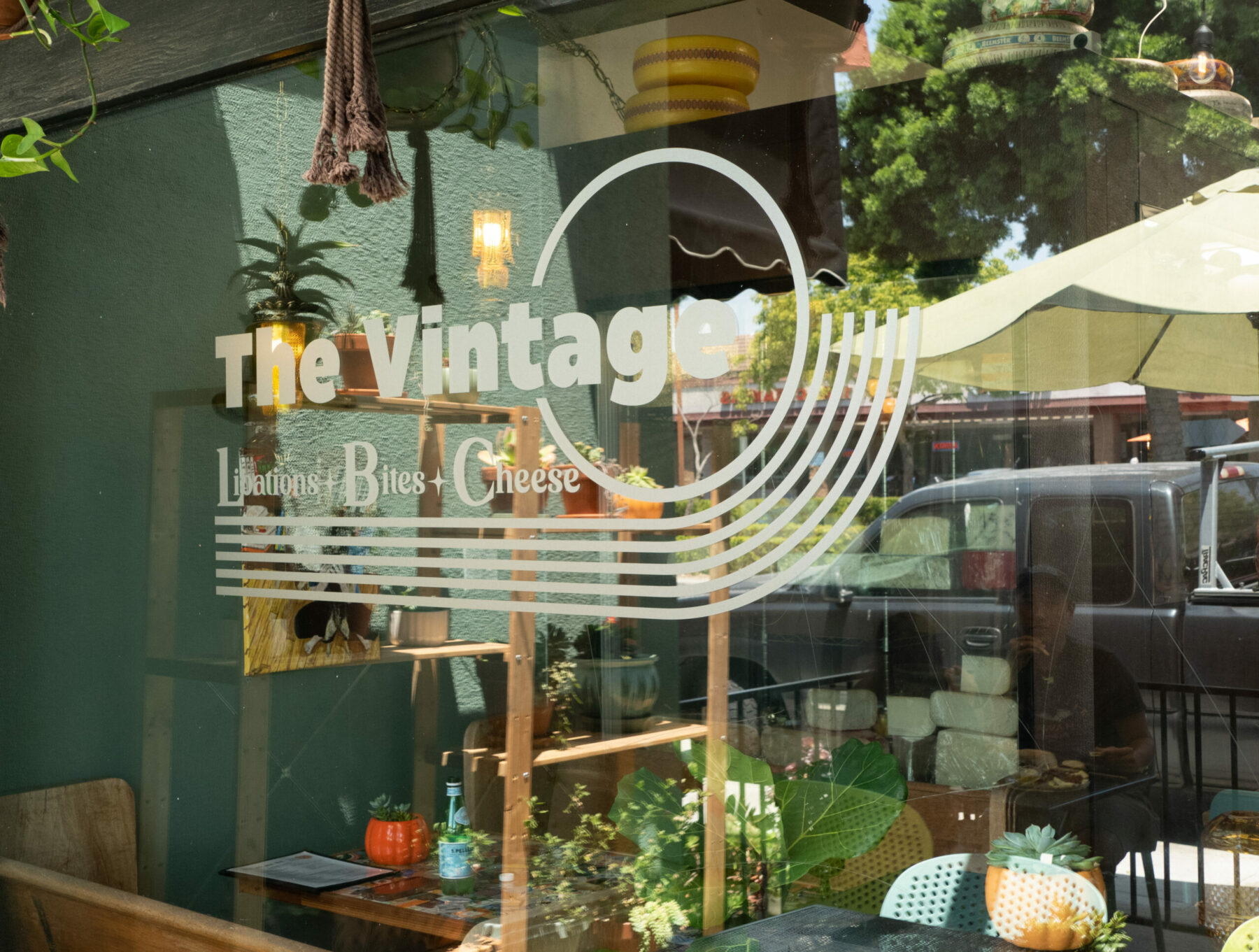
The Bixby Knolls shop is a reimagined and much more colorful evolution of Cheese Addiction, which previously operated in the space.
“So, when (Cheese Addiction) came up for sale, I was like, ‘Oh my gosh, this fulfills all of those fantasies that I’ve had for the last 20 years,’” Harmon said.
That shop was purely a retail space, but Harmon wants her customers to have the option of experiencing charcuterie on-site—something she says no one else in Long Beach is doing.
“It’s a party in the front, retail in the back,” she said. “The front aspect is very European, sit-down and have some cheese, wine, beer.”
Operating on a small budget, she illustrated her own logo, filled the space with art and furniture mostly from her home and designed a space that is reflective of its name. The atmosphere seeks to harken back to the mid-1970s—hanging pendant swag lights, vibrant earth tone paint and colorful vintage nappy glassware all characterize the space.
“I just kind of undecorated my house and brought it in here,” she said.
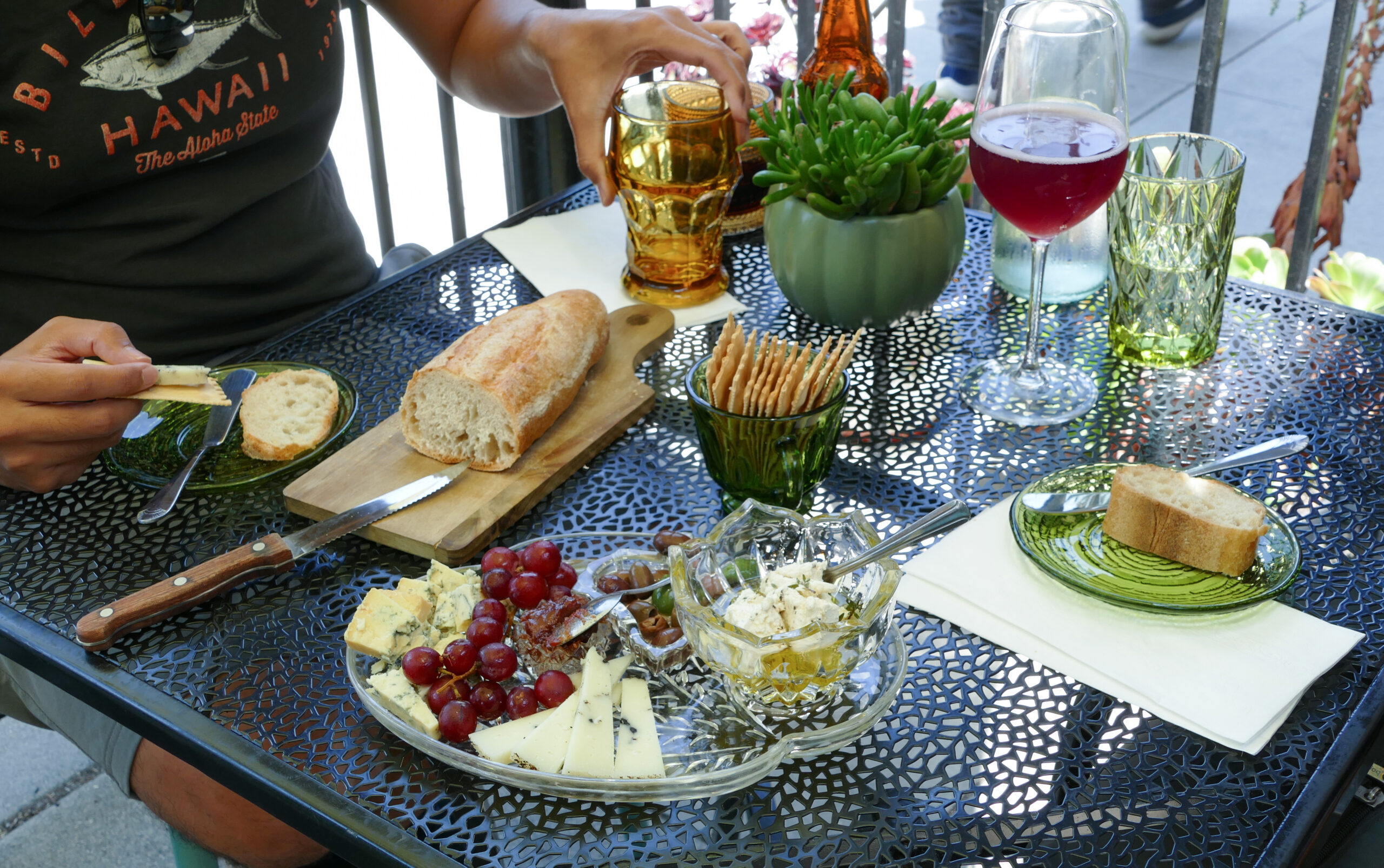
Cheese board basics
“Are you a blue cheese hater?” Harmon jokes, slicing a bit of what she considers to be a divisive cheese.
Harmon sells about 75 to 100 different types of cheeses that are cut to order at any given time. She also offers jams, gourmet butters, sandwiches and of course, charcuterie, which, she reminds us, is just a 15th century French term for cured meat (that’s shar-coo-ter-ee).
But The Vintage LBC also has a robust amount of offerings for vegetarians and vegans alike.
“People don’t realize that a ton of really popular cheeses, really great cheeses, are vegetarian,” Harmon said. That’s because “they’re made with vegetable rennet instead of animal rennet.”
But these are different from vegan cheeses, she said. “Entirely different.”
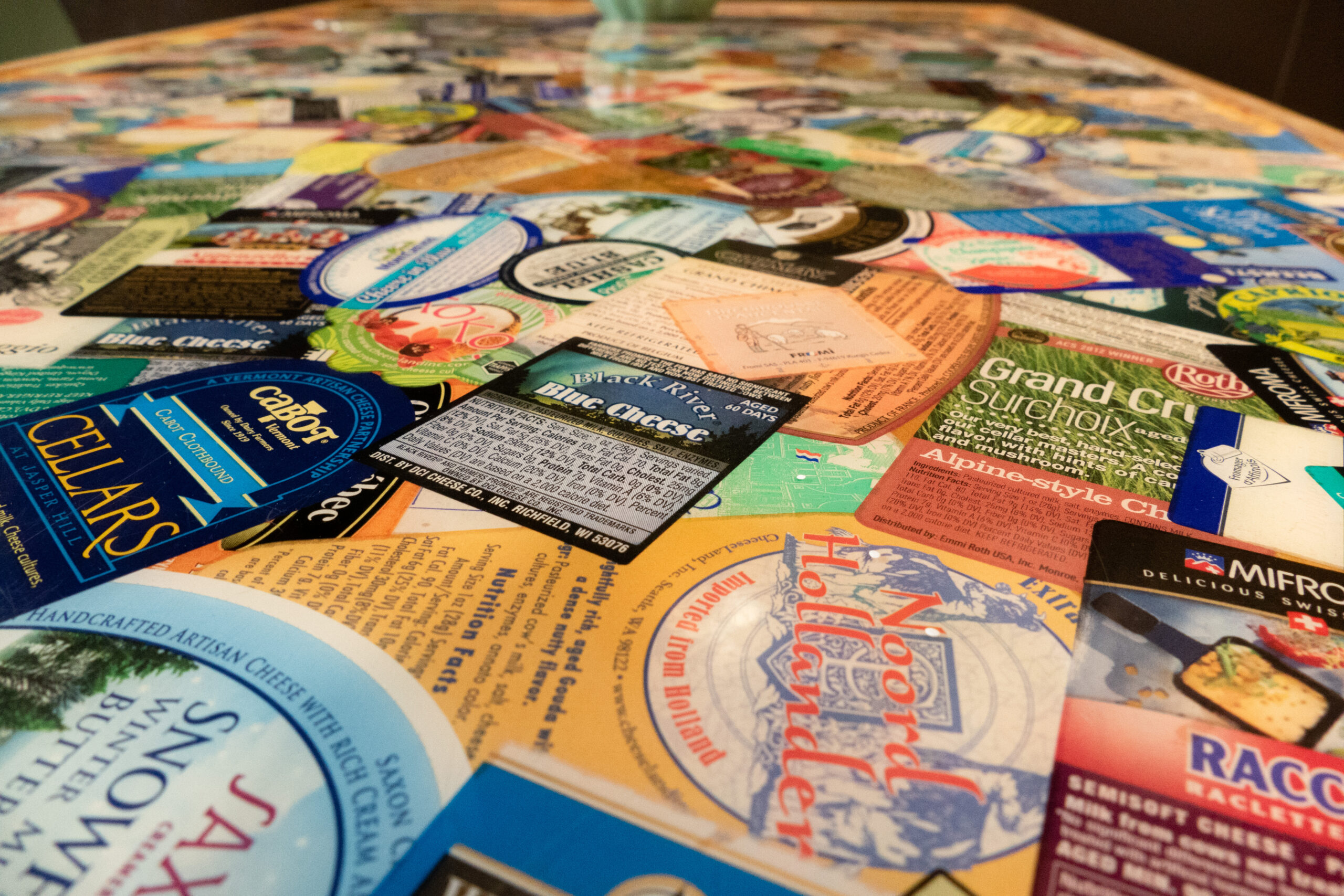
“The rennet is the substance that coagulates the curds of the cheese and traditionally rennet is the line of a calf’s stomach or cow’s stomach,” she said. “But they now make vegetarian rennets which do the same thing … and that doesn’t add flavor or change the flavor in any way. … So it’s still made with milk obviously, but it’s not made with animal.”
For example, plant-based rennets can be produced with artichokes.
Alternatively, vegan cheeses are often nut-based. At The Vintage LBC, Harmon offers a vegan cheese flight for $24.
The shop’s cheese flights and charcuterie plates, ranging from $19 to $43, are entirely customizable at the counter and can be ordered for dine in or takeout.
“For me, it goes cheese first, then meat and what I call accompaniments,” Harmon said.
For those who aren’t confident in their charcuterie board building skills, Harmon and her staff are able to advise. When it comes to charcuterie design, Harmon says there are no rules, but it’s always good to have a balance of complementary cheese and meat flavors as well as starches and accouterments.
“But I always let the customer take the lead,” she said. “Because the way they’re going to learn about cheese is by experimenting.”
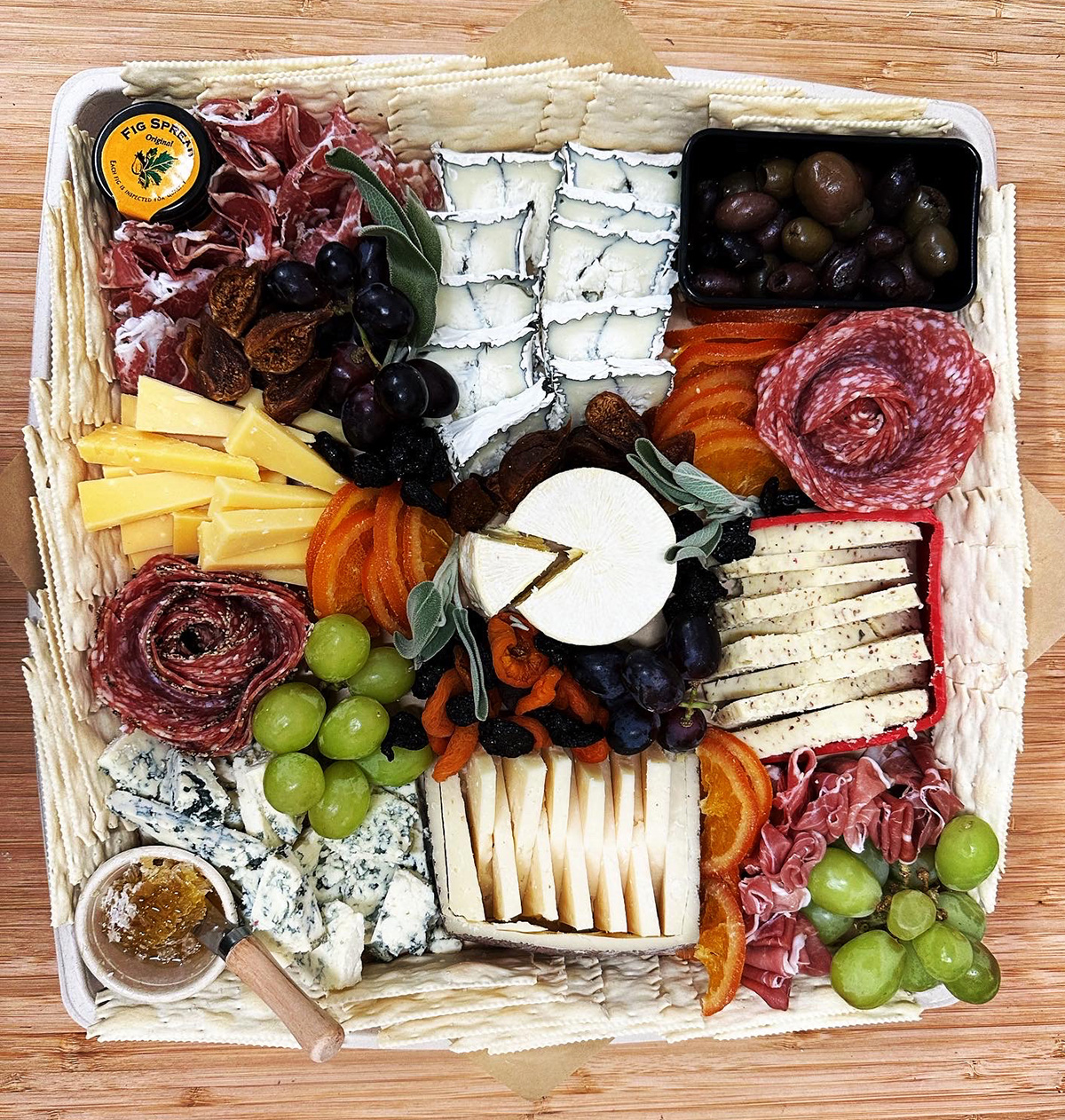
Here are four steps to building a charcuterie board.
Step 1: Consider the season
Like fruits and vegetables, there are seasons for some cheeses, but not all, Harmon said.
First, not all animals produce milk year round. Second, there are seasonal changes in milk composition, and third, grazing green grasses in the summer will produce different flavors than eating hay in a barn during the winter.
Thus, different flavors also characterize certain seasons. For example, Harmon says she likes a pumpkin spice Gouda in the fall, a Red Witch Alpine cheese around Halloween and Alp Blossom, which is covered in dry flowers and only available during the spring.
“During the winter, I might like something really heavy and stinky,” Harmon said. “In the summer, I’m gonna want something a little lighter—but I always love an aged Gouda with the little salt crystals.”
Step 2: Choose your cheese
Balance between flavor and texture is important when it comes to selecting cheeses. For example, you might want a variety—a hard or semi-firm cheese such as the Drunken Goat (goat’s milk); a soft, double-cream cheese such as Fromager D’affinois or an aged Gouda.
Harmon encourages customers to taste a few cheeses before committing to them on a cheese flight or a charcuterie order.
“I would say not to limit yourself with one kind of cheese—don’t have five hard cheeses,” she said. “You’ve got to have a variety and range of milks and textures.”

Step 3 – Choose your charcuterie (cured meats)
After selecting a balance of cheese textures and flavors, it’s time to select the charcuterie, which, if you remember, just translates to cured meats.
“At that point I’d say with the super creamy cheese, let’s get you some prosciutto,” Harmon said. “Something really nice to kind of enhance that flavor.”
To pair with a hard cheese, Harmon suggests salami or a patte.
Step 4 – Make it pretty, fill in the gaps
Aside from the delights of grazing culture, the world fell in love with the pandemic era charcuterie platter for its colorful palette and endless possibilities from vegan platters to Mediterranean assortments.
“I’m always learning new techniques,” Harmon said. “You can make the meats into a salami rose, you can make these little bridges. There’s different ways of folding and cutting cheeses. … If it’s a nice firm cheese, you can make these nice little geometric shapes.”
Then, Harmon fills in the gaps with sweet and savory accompaniments like fresh and dried fruit, chocolate, honey, jam, almonds, roasted tomatoes and olives.
“Lot’s of dried fruit and (dried candied) oranges are wonderful,” she said. “It gives it a nice pop of color.”
After that, the sky is really the cheese board limit when it comes to adorning it with the finishing touches—from edible flowers to rosemary.
“Fresh sage is also beautiful, especially during Christmas and Thanksgiving,” she said.
For more information about Harmon’s cheese shop, her Perfect Pairings Cheese Club and to see the menu, check out the shop’s website. The Vintage LBC is located at 4236 Atlantic Ave. and is open Wednesday and Thursday from 11 to 8 p.m., Friday and Saturday from 11 to 9 p.m. and on Sunday from 11 to 5 p.m.
